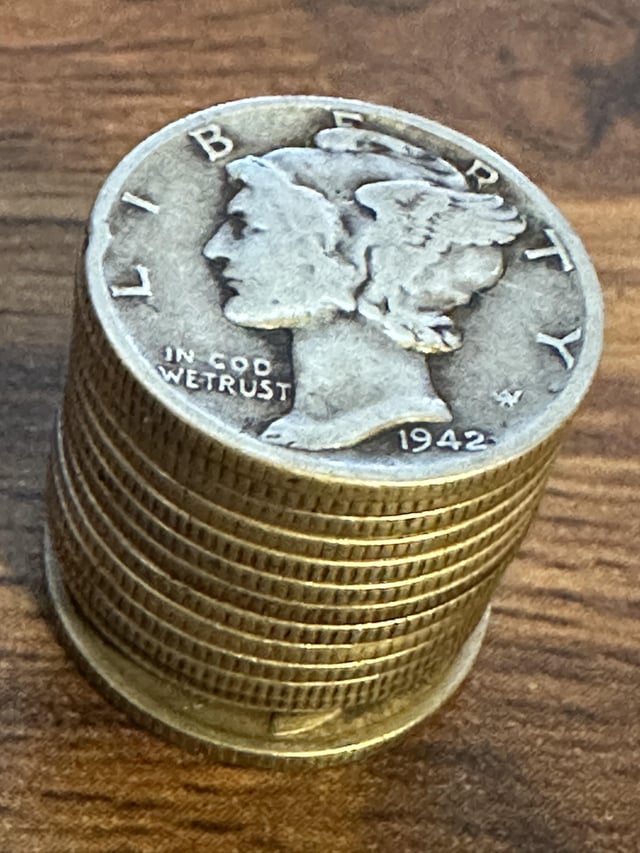Acquiring Mercury Dimes requires vigilance to prevent expensive oversights. Key pitfalls can significantly impact value and authenticity.
Mistake 1: Overlooking Mint Marks & Dates
Mercury Dime value hinges critically on mint mark and date. Ignoring the tiny mark below "ONE DIME" leads to overpaying for common dates or missing key rarities.
- 1916-D: Highly valuable; key date demanding expert verification.
- 1921, 1921-D: Scarce, low mintage. Ensure authenticity.
- 1942/1 Overdate: Major rarity (1942 over 1941); requires certification.
- Verify mint marks ("D" for Denver, "S" for San Francisco); missing mark indicates Philadelphia.
Mistake 2: Ignoring Condition & Overgrading
Accurate grading is paramount. Wishful thinking leads to overpayment for coins lacking eye appeal or showing hidden wear.

- Learn Wear Points: Focus on Liberty's brow & fasces bands.
- Use Magnification: Inspect for hidden cleaning, scratches, or environmental damage.
- Trust Third-Party Graders (TPG): For valuable coins (key dates, high grade), insist on PCGS or NGC slabs. Avoid raw coins unless experienced.
- Rely on industry-standard price guides for condition-specific values.
Mistake 3: Buying From Unreliable Sources
The purchase source dramatically impacts risk. Avoid impulse buys from venues lacking expertise or recourse.
- Reputable Dealers: Established numismatic dealers offer guarantees and expertise.
- Major Auction Houses: Provide verified provenance and condition reports.
- Exercise Caution Online: Scrutinize seller feedback, require high-resolution images, and be wary of "too good to be true" deals.
- Understand return policies before purchasing.
Mistake 4: Falling Prey to Counterfeits & Altered Coins
Fakes exist, ranging from cheap copies to sophisticated alterations on genuine coins.
- Spot Altered Dates/Mint Marks: Check for tooling marks, inconsistencies in lettering style, or metal flow around the date/mint mark area.
- Identify Counterfeits: Weight discrepancies, incorrect luster, soft details, or unusual metal composition are red flags. A magnet test helps (real dimes are non-magnetic silver).
- Authentication is Crucial: For expensive pieces, certification by PCGS or NGC is essential.
Successful Mercury Dime collecting demands research on date/mint mark rarity, meticulous condition assessment using professional standards, sourcing from trusted entities, and rigorous authentication checks to avoid costly counterfeits and alterations.






